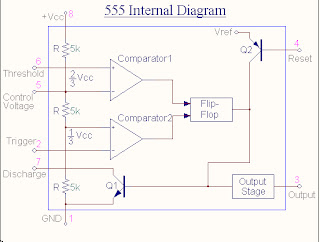Command | Description |
| Absolute value |
acker | Compute the K matrix to place the poles of A-BK, see also place |
axis | Set the scale of the current plot, see also plot, figure |
bode | Draw the Bode plot, see also logspace, margin, nyquist1 |
c2dm | Continuous system to discrete system |
clf | Clear figure (use clg in Matlab 3.5) |
conv | Convolution (useful for multiplying polynomials), see also deconv |
ctrb | The controllability matrix, see also obsv |
| Deconvolution and polynomial division, see also conv |
det | Find the determinant of a matrix |
dimpulse | Impulse response of discrete-time linear systems, see also dstep |
dlqr | Linear-quadratic requlator design for discrete-time systems, see also lqr |
dlsim | Simulation of discrete-time linear systems, see also lsim |
dstep | Step response of discrete-time linear systems, see also stairs |
eig | Compute the eigenvalues of a matrix |
eps | Matlab's numerical tolerance |
feedback | Feedback connection of two systems. |
figure | Create a new figure or redefine the current figure, see also subplot, axis |
for | For, next loop |
format | Number format (significant digits, exponents) |
function | Creates function m-files |
grid | Draw the grid lines on the current plot |
gtext | Add a piece of text to the current plot, see also text |
| HELP! |
hold | Hold the current graph, see also figure |
if | Conditionally execute statements |
imag | Returns the imaginary part of a complex number, see also real |
impulse | Impulse response of continuous-time linear systems, see also step, lsim, dlsim |
input | Prompt for user input |
inv | Find the inverse of a matrix |
| Generate grid lines of constant damping ratio (zeta) and settling time (sigma), see also sgrid, sigrid, zgrid |
legend | Graph legend |
length | Length of a vector, see also size |
linspace | Returns a linearly spaced vector |
| Produce a Nyquist plot on a logarithmic scale, see also nyquist1 |
log | natural logarithm, also log10: common logarithm |
loglog | Plot using log-log scale, also semilogx/semilogy |
logspace | Returns a logarithmically spaced vector |
lqr | Linear quadratic regulator design for continuous systems, see also dlqr |
| Simulate a linear system, see also step, impulse, dlsim. |
| Returns the gain margin, phase margin, and crossover frequencies, see also bode |
norm | Norm of a vector |
| Draw the Nyquist plot, see also lnyquist1. Note this command was written to replace the Matlab standard command nyquist to get more accurate Nyquist plots. |
obsv | The observability matrix, see also ctrb |
ones | Returns a vector or matrix of ones, see also zeros |
place | Compute the K matrix to place the poles of A-BK, see also acker |
| Draw a plot, see also figure, axis, subplot. |
poly | Returns the characteristic polynomial |
| Add two different polynomials |
polyval | Polynomial evaluation |
print | Print the current plot (to a printer or postscript file) |
pzmap | Pole-zero map of linear systems |
| Find the number of linearly independent rows or columns of a matrix |
real | Returns the real part of a complex number, see also imag |
rlocfind | Find the value of k and the poles at the selected point |
rlocus | Draw the root locus |
roots | Find the roots of a polynomial |
| Find the scale factor for a full-state feedback system |
set | Set(gca,'Xtick',xticks,'Ytick',yticks) to control the number and spacing of tick marks on the axes |
series | Series interconnection of Linear time-independent systems |
sgrid | Generate grid lines of constant damping ratio (zeta) and natural frequency (Wn), see also jgrid, sigrid, zgrid |
| Generate grid lines of constant settling time (sigma), see also jgrid, sgrid, zgrid |
size | Gives the dimension of a vector or matrix, see also length |
sqrt | Square root |
ss | Create state-space models or convert LTI model to state space, see also tf |
ss2tf | State-space to transfer function representation, see also tf2ss |
ss2zp | State-space to pole-zero representation, see also zp2ss |
stairs | Stairstep plot for discreste response, see also dstep |
| Plot the step response, see also impulse, lsim, dlsim. |
subplot | Divide the plot window up into pieces, see also plot, figure |
| Add a piece of text to the current plot, see also title, xlabel, ylabel, gtext |
tf | Creation of transfer functions or conversion to transfer function, see also ss |
tf2ss | Transfer function to state-space representation, see also ss2tf |
tf2zp | Transfer function to Pole-zero representation, see also zp2tf |
title | Add a title to the current plot |
| Returns the bandwidth frequency given the damping ratio and the rise or settling time. |
xlabel/ylabel | Add a label to the horizontal/vertical axis of the current plot, see also title, text, gtext |
zeros | Returns a vector or matrix of zeros |
zgrid | Generates grid lines of constant damping ratio (zeta) and natural frequency (Wn), see also sgrid, jgrid, sigrid |
zp2ss | Pole-zero to state-space representation, see also ss2zp |
zp2tf | Pole-zero to transfer function representation, see also tf2zp |






